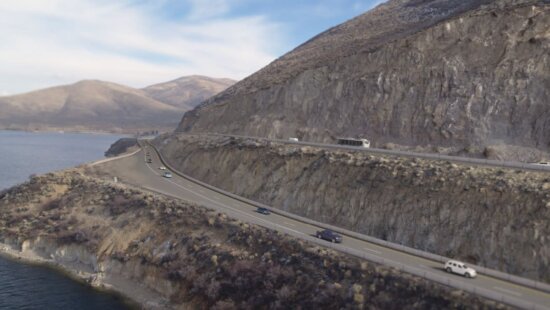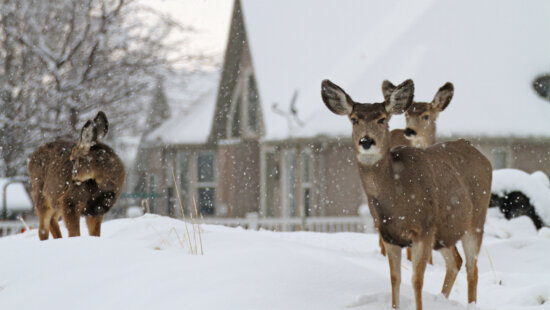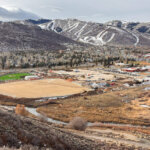NonProfit
Activists dub SR-224 ‘wildlife slaughter row,’ demand action
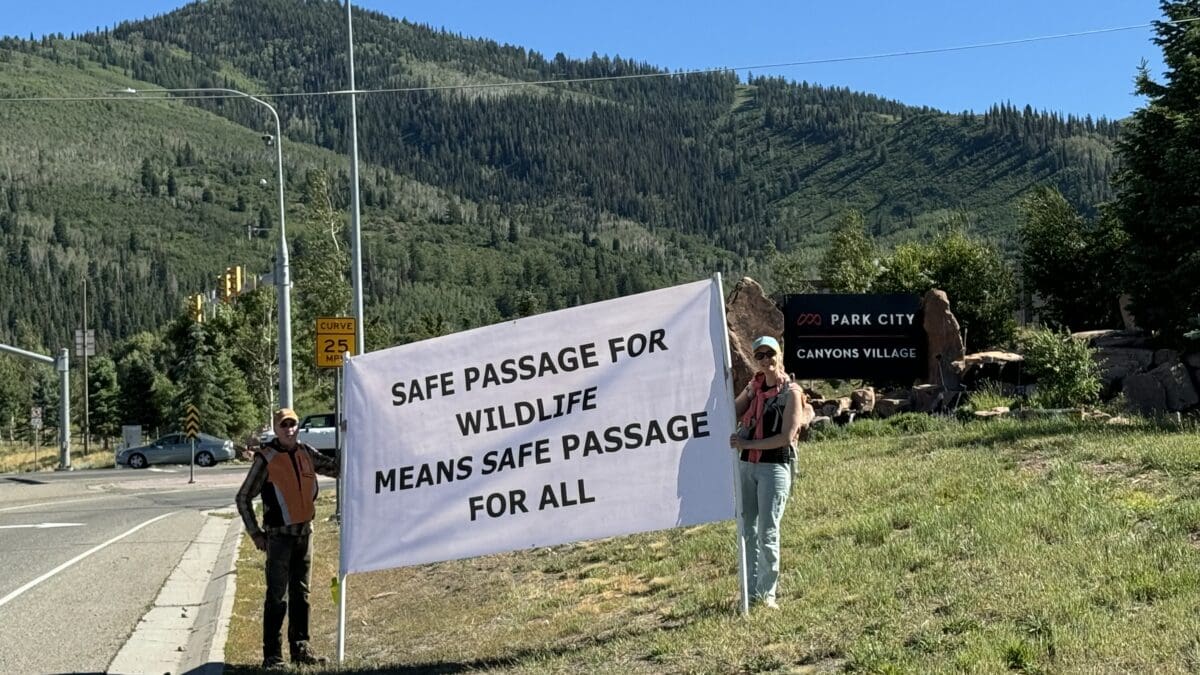
Community members supporting a 224 wildlife crossing on July 3, 2024. It reads, "Safe passage for wildlife means safe passage for all." Photo: Save People Save Wildlife
The Utah Department of Transportation and Utah Division of Wildlife Resources respond to nonprofit Save People Save Wildlife's urgent call for action
PARK CITY, Utah — Wildlife-vehicle collisions on State Route 224 have become a significant concern for residents and activists in Park City. The nonprofit organization Save People Save Wildlife (SPSW) is leading a call to action, emphasizing the safety and financial costs associated with these incidents.
Erin Ferguson, president of SPSW, stated, “The community is demanding safe passage on SR-224, not only to protect the wildlife but also to provide connectivity to the areas of open space that we have worked so hard to set aside.”
The Utah Division of Wildlife Resources (DWR) and the Utah Department of Transportation (UDOT), however, highlight the complexities involved in implementing effective mitigation measures.
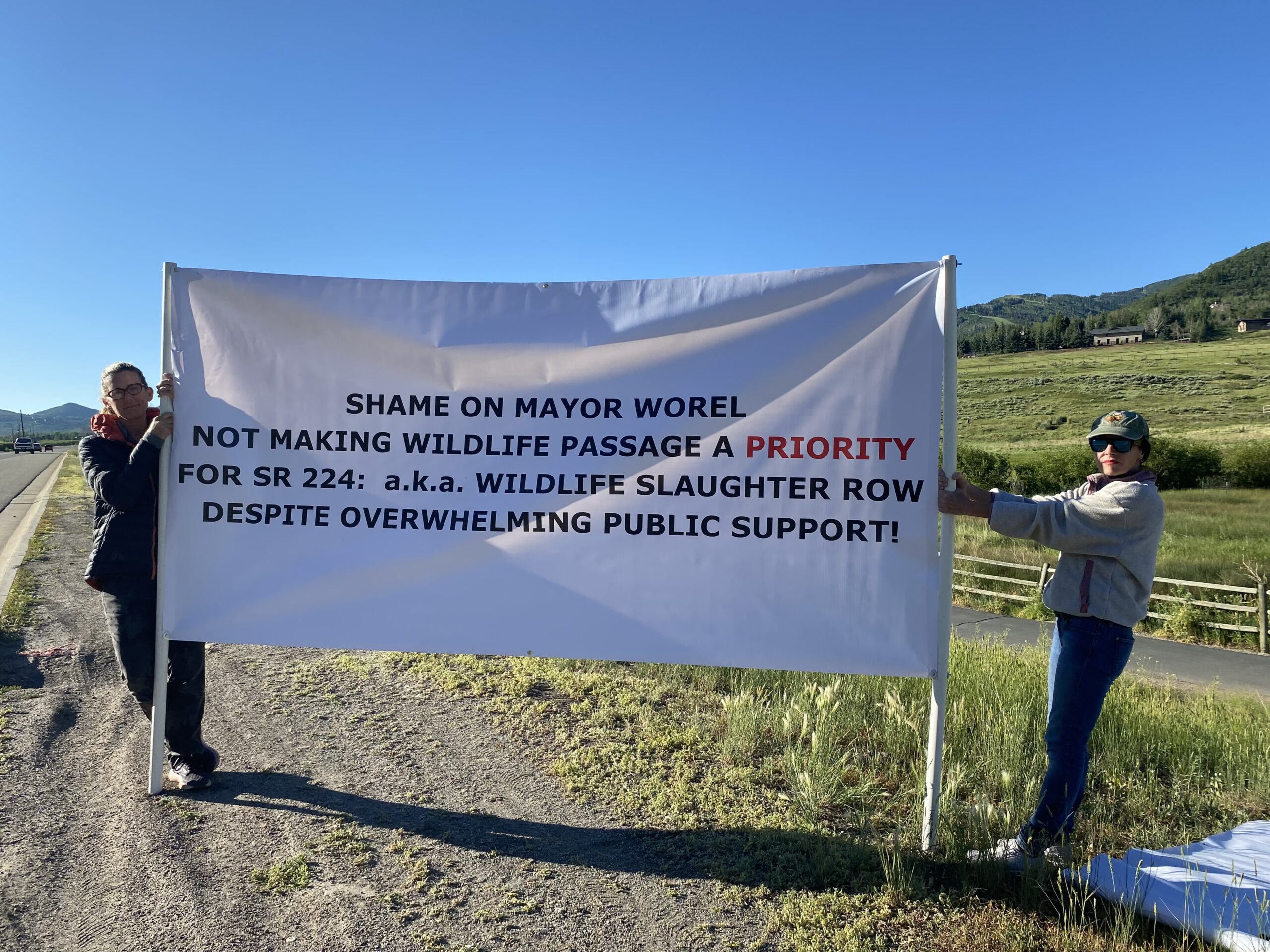
Ferguson reported substantial public support as the group held up banners on 224 during the busy Fourth of July holiday weekend.
“We are standing out there for every person that wrote a letter—for every editorial that was written—for every dollar that was donated that she [Mayor Worel] never acknowledged, addressed, or spoke publicly about and kept silent when UDOT needed to hear a voice from Park City,” Ferguson said.
The city responded with the following statement: “We have heard and acknowledge the concerns for wildlife in our community. However, when it comes to SR 224, it is a UDOT road and they make determinations on these matters.”
Ferguson declared that the cost to the public due to wildlife-vehicle collisions on SR-224 ranges between $750,000 and $1 million annually. The organization points to UDOT’s own studies, which indicate that the six-mile stretch of SR-224 between Kimball Junction and mile marker six sees an average of 247 crashes every ten years, costing $7.5 million over that period.
“It’s truly a million-dollar question,” said Ferguson. “Why is it okay for UDOT to pass that cost along to the public? Why is it okay for them to forsake public safety?”
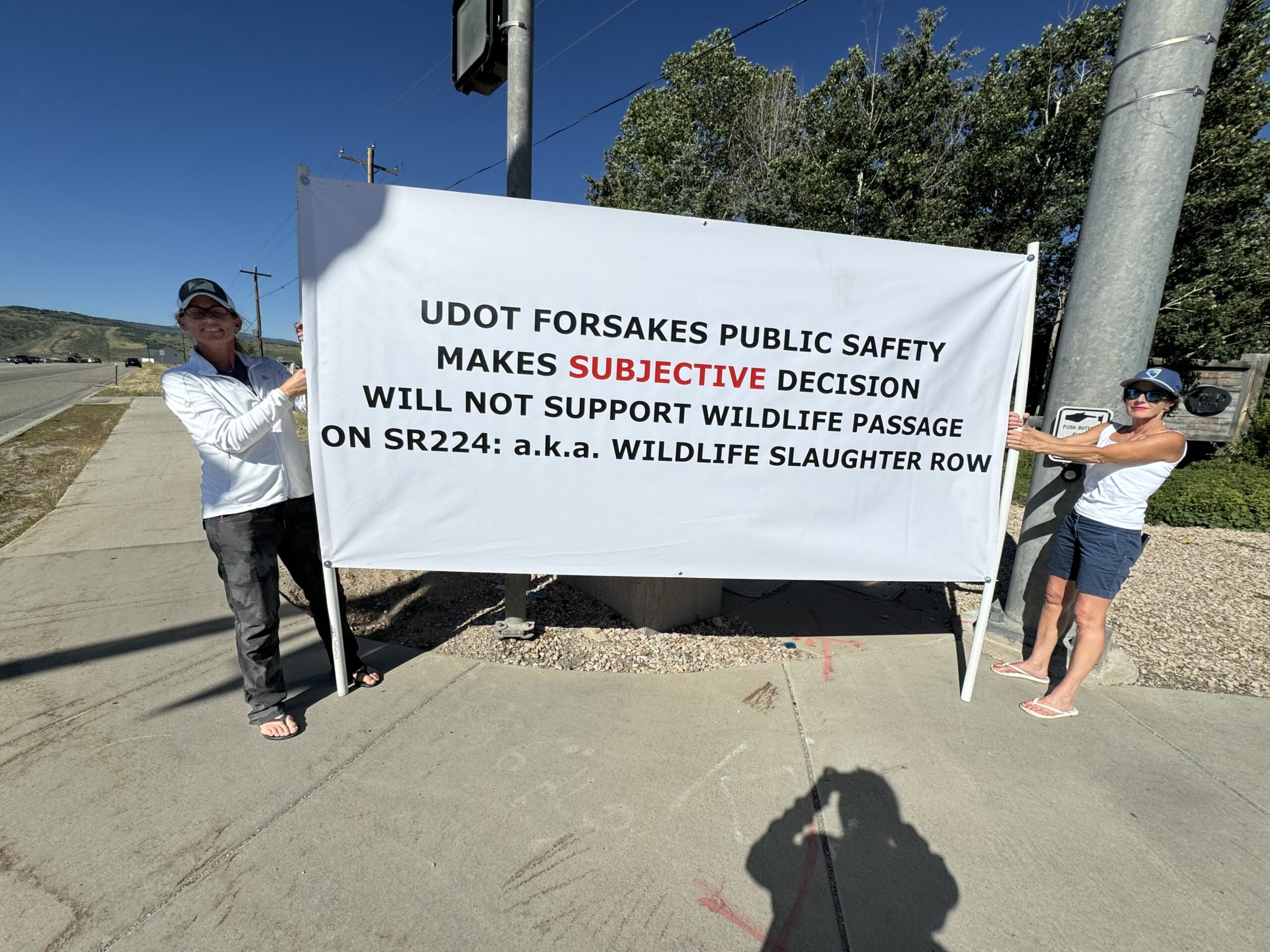
Regarding these studies, Matt Howard, UDOT’s natural resources manager, said, “That initial report and the basis of that estimate was to identify different species and how much value that species has to the state of Utah. Many different things go into it; for example, what a hunt tag would cost and the inherent value of wildlife. And so they assign a number to that, and then they assign a number to the damage that a wildlife collision can do, and then to the potential for injury. And so it’s all based on these insurance amortization tables.”
Howard continued, “When we look at this on a statewide level, it is valuable to know how much value an animal collision has, but trying to look at it on a stretch-by-stretch basis and say this stretch is a million dollars versus that one… that’s not a very productive way to look at it.”
John Gleason, spokesperson for UDOT, added, “There isn’t anything different about the way we would look at the cost of wildlife collisions on 224 compared to the rest of the state.”
Faith Jolley, public information officer for the DWR, outlined the DWR’s role in managing wildlife-vehicle collisions, “Our Division and UDOT work together on solutions to wildlife-vehicle collisions in areas where these collision hotspots are identified. UDOT is the regulatory authority over roadways, and our Division provides wildlife information that we collect through our GPS tracking efforts of deer and other wildlife,” she said.
Jolley further described the collaborative efforts to analyze and mitigate wildlife impacts in this high-risk area. “Our Division recently analyzed and reviewed potential wildlife impacts and possible wildlife mitigation efforts associated with wildlife-vehicle collisions on SR-224,” she said. “We worked collaboratively on these efforts with our partners at High Valley Transit, Summit County, Park City, and UDOT.”
“The proposal of a wildlife crossing, it just wouldn’t work,” declared Gleason.
“It would transport wildlife into neighborhoods and really wouldn’t achieve what we’re trying to accomplish.” Howard also noted the challenges posed by the area’s development and topography. “We could fence the whole corridor, but each spot where people can get in and out would create gaps in the fencing,” Howard explained.
Mitigation efforts such as underpass structures, overpass structures, at-grade crossings, fencing, wildlife detection systems, warning signs, and vegetation management have been implemented in other areas with varying success. However, according to Howard, SR-224 presents unique challenges due to multiple access roads and utility corridors, complicating the implementation of effective strategies.
Ferguson expressed frustration with Mayor Worel, accusing her of failing to prioritize the issue despite significant public support, “We gave her 1,000 letters at her request, and she did nothing with them. This is what the public is putting their tax dollars towards.” Calling out the DWR, she implored, “Be a wildlife management agency and actually do what’s right for the wildlife.”
As the city prepares for increased traffic with the potential 2034 Winter Olympics, Ferguson emphasized the necessity of addressing this issue promptly. “They estimated 80,000 cars per day on 224 alone during the Olympics. It’s going to be a mess.”
Howard echoed the concern for handling increased traffic, noting that ensuring the infrastructure can manage the load is a priority. “We have a great long-range plan that looks at the next several decades,” said Gleason. UDOT is actively pursuing grants to fund significant projects, including retrofitting structures and building new crossings in the Echo Junction area. “We’re the fastest growing state in the country, and so we’re always looking to make sure that we’re focusing on all methods of transportation, not just driving, but walking, biking, using transit. It all needs to be functioning at a very high level for us to be able to get around and enjoy our lives,” added Gleason.
Regarding Save People Save Wildlife and 224 specifically, Howard shared, “We understand that this is what they see every day. And so, of course, it’s what they’re going to be focused on, but we have to take it from a statewide perspective and really look at where we can make a difference, where we can improve safety and get the most for what we’re doing here.” He concluded, “I think one of the things that we are starting to think about is, how can we start finding areas where we are just getting people used to living among wildlife? Driving a little more carefully, being a little more aware of their surroundings, knowing that they moved to an area because there are going to be animals around. It’s also a little bit of a responsibility if you live in those areas to do the best you can to make sure that everyone’s safe.”
“There is kind of an ethic that goes along with living in a mountain town and living among wildlife that I think we could all work on a little bit.”
Ferguson and her SPSW team are planning more demonstrations and awareness campaigns as the Olympic bid announcement approaches.

















